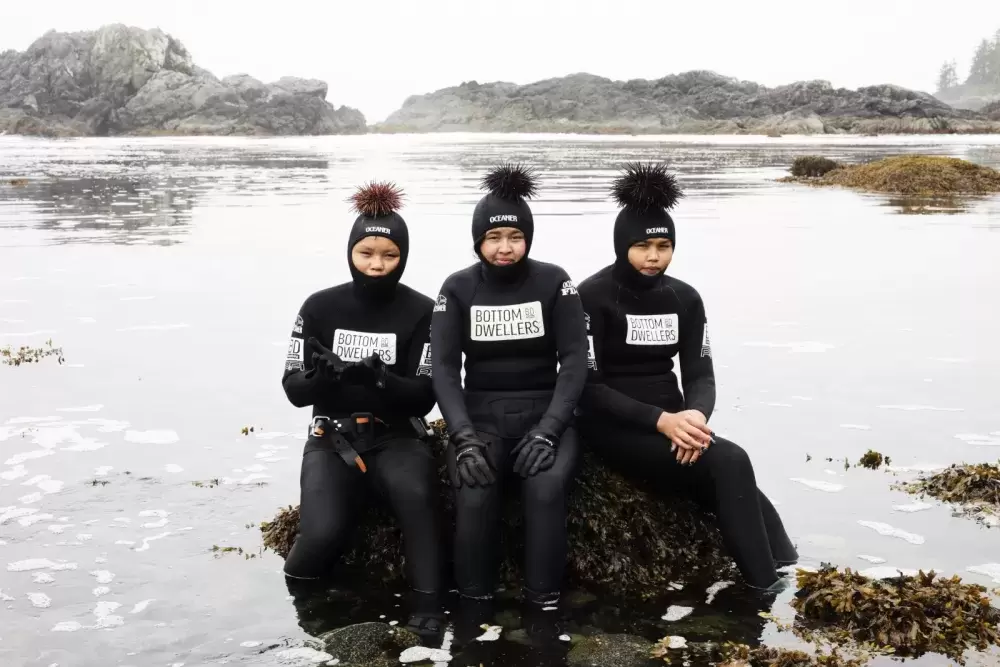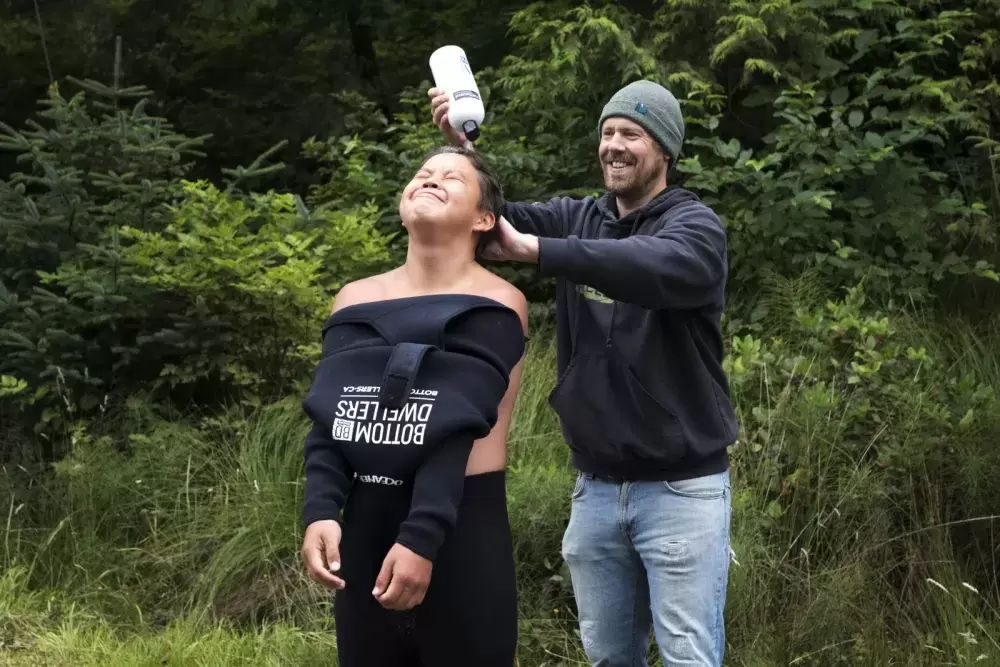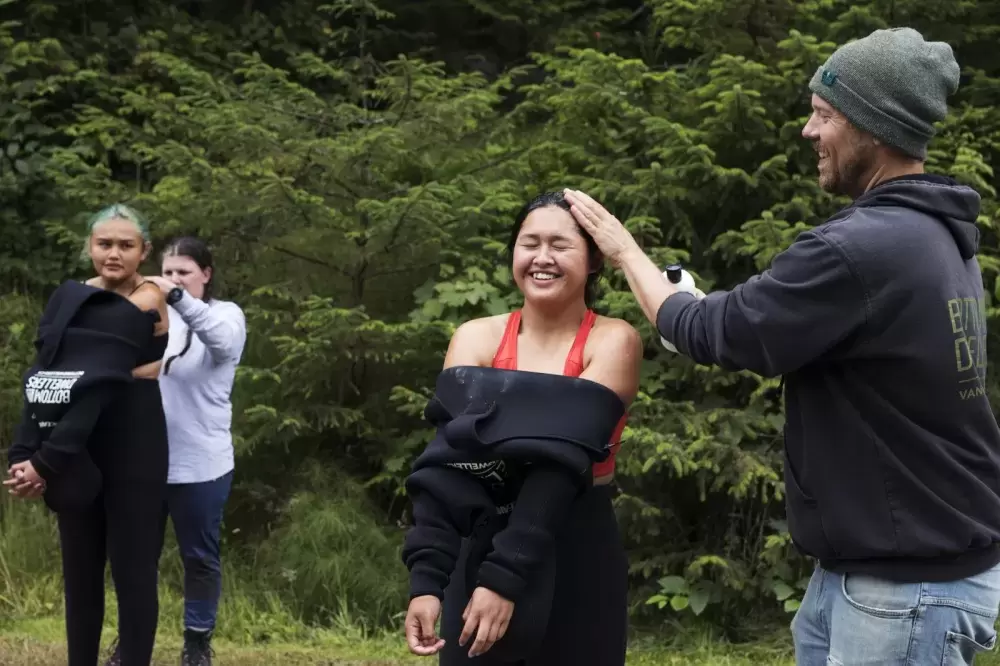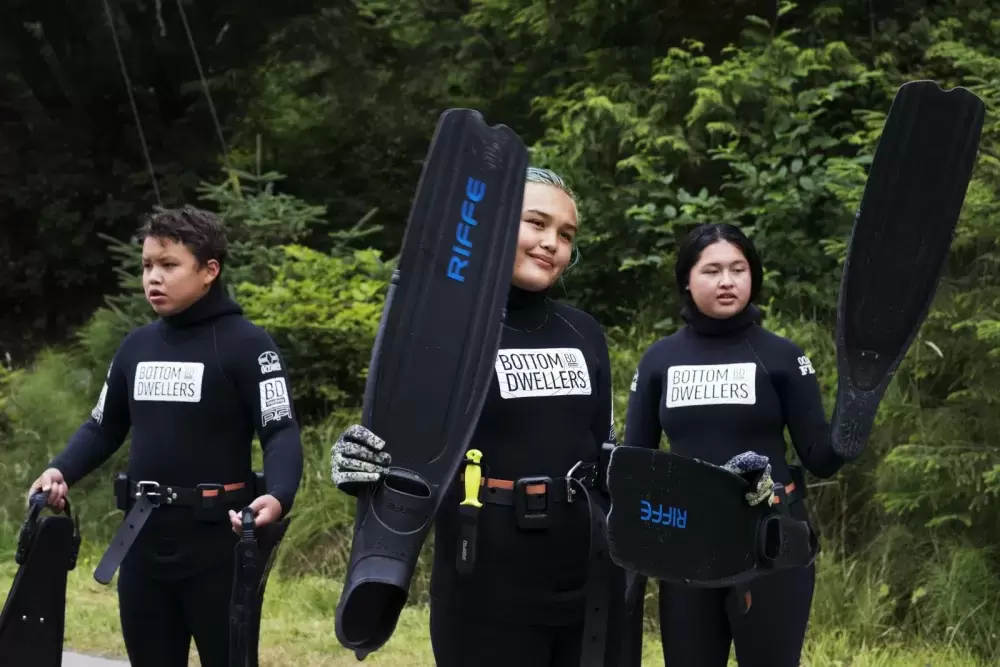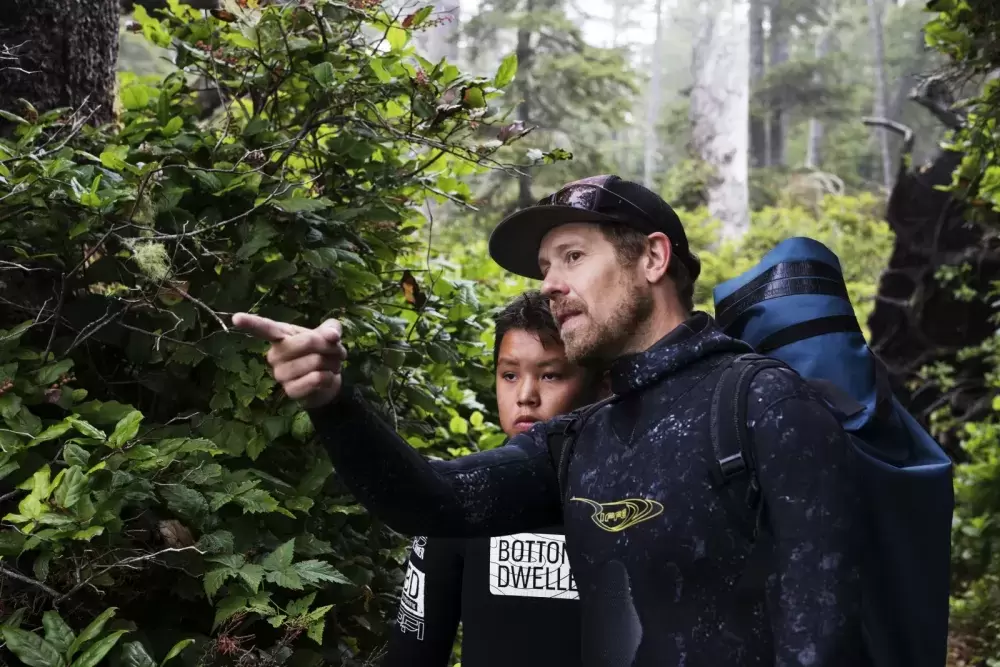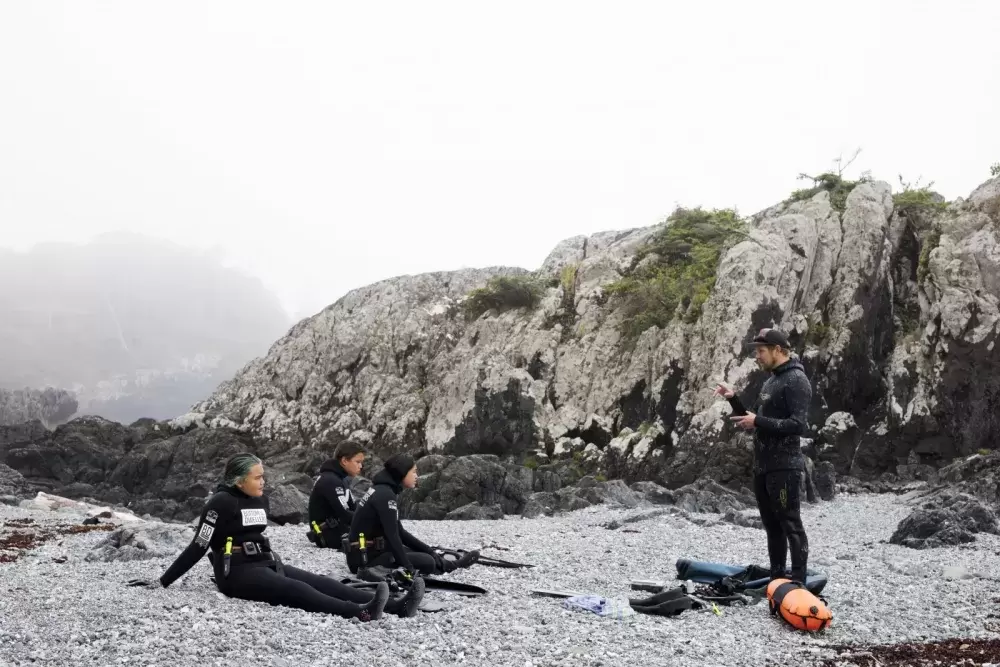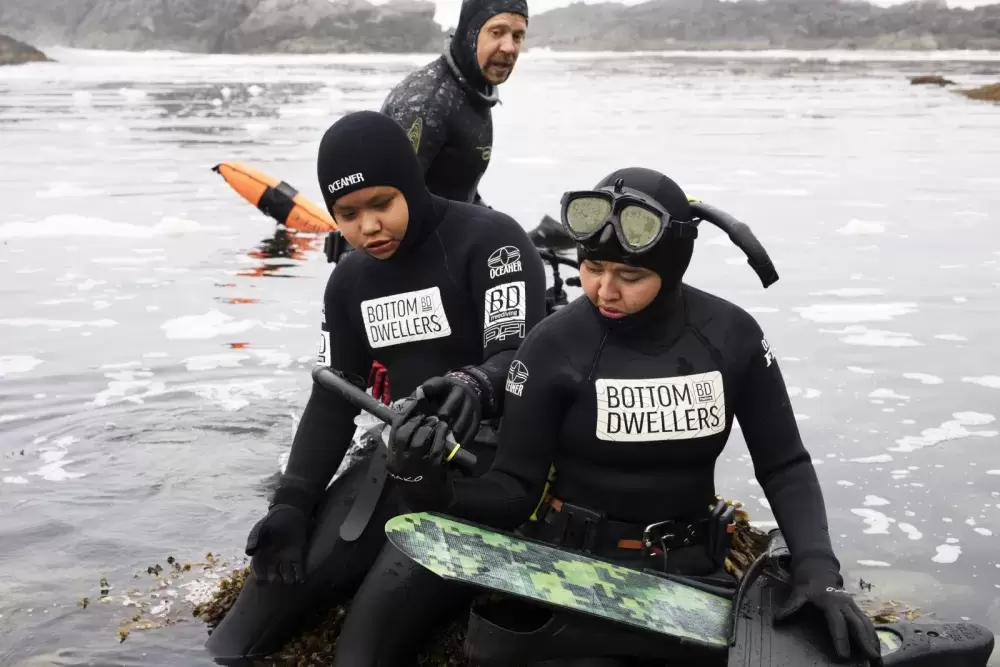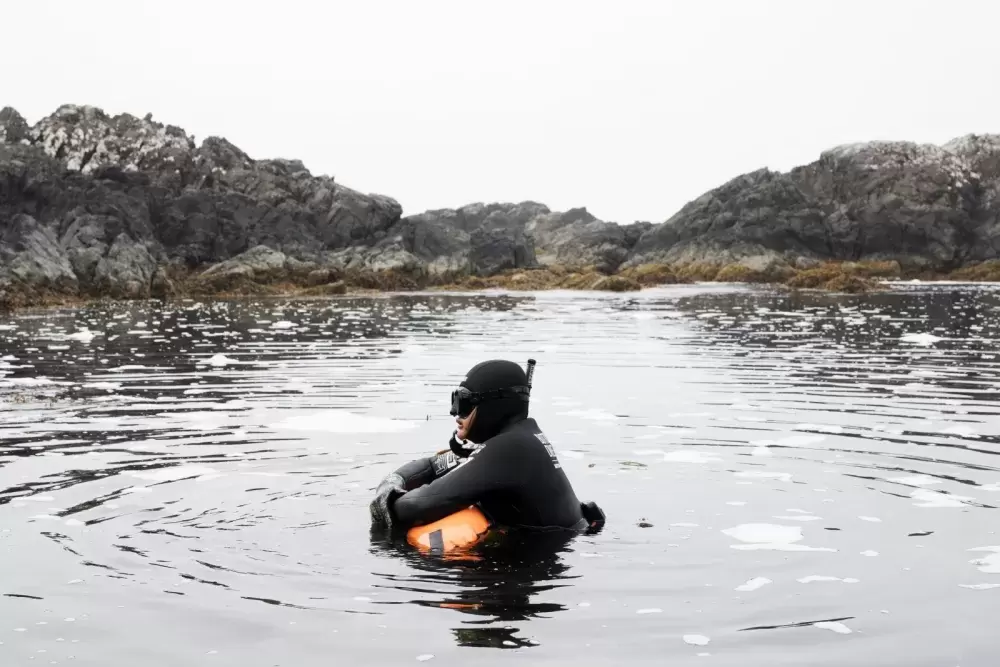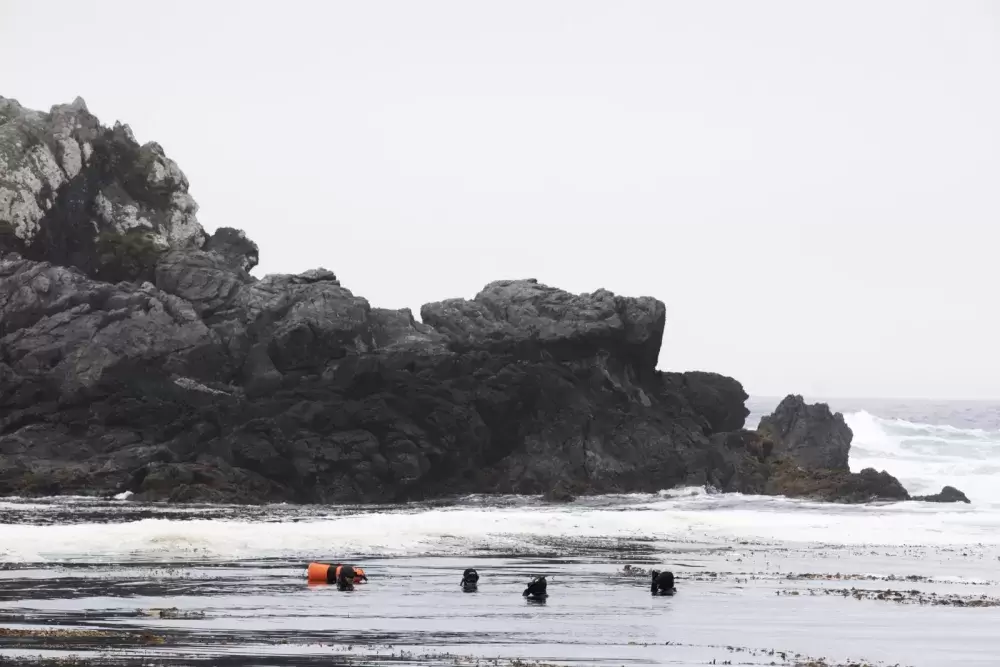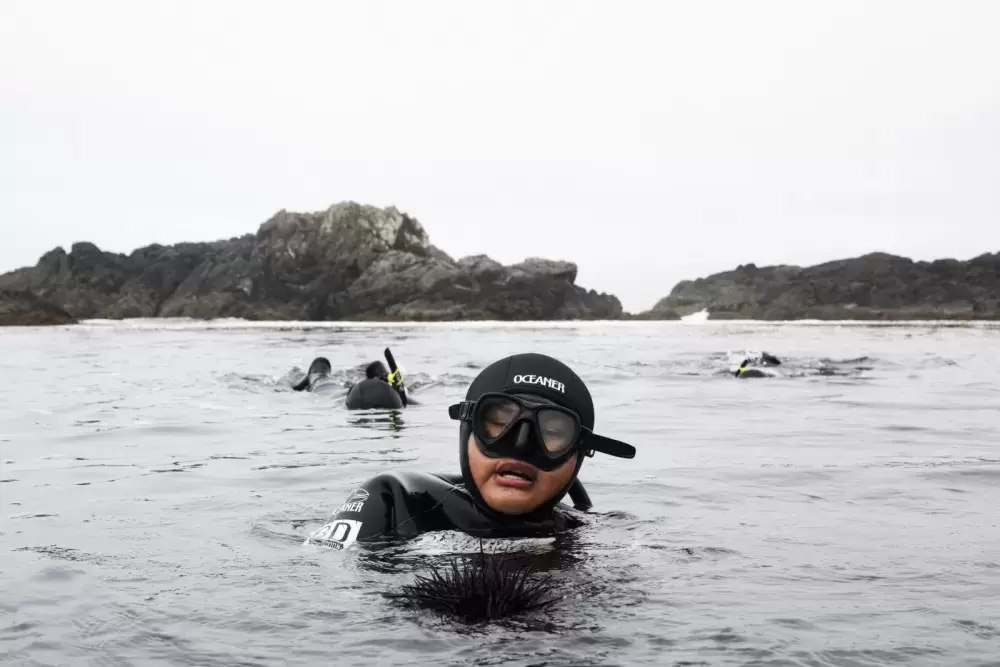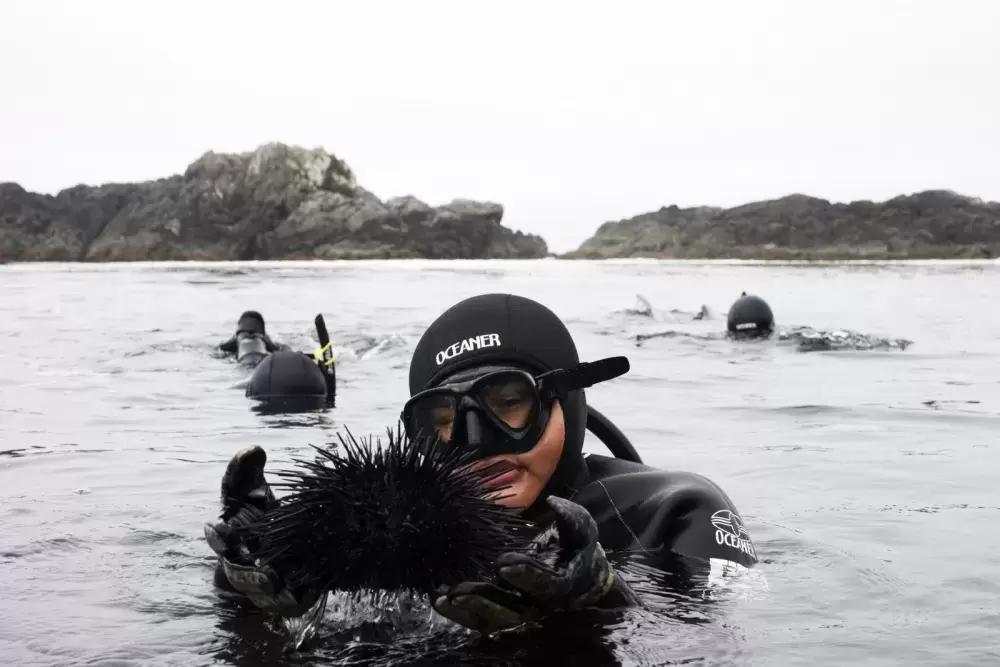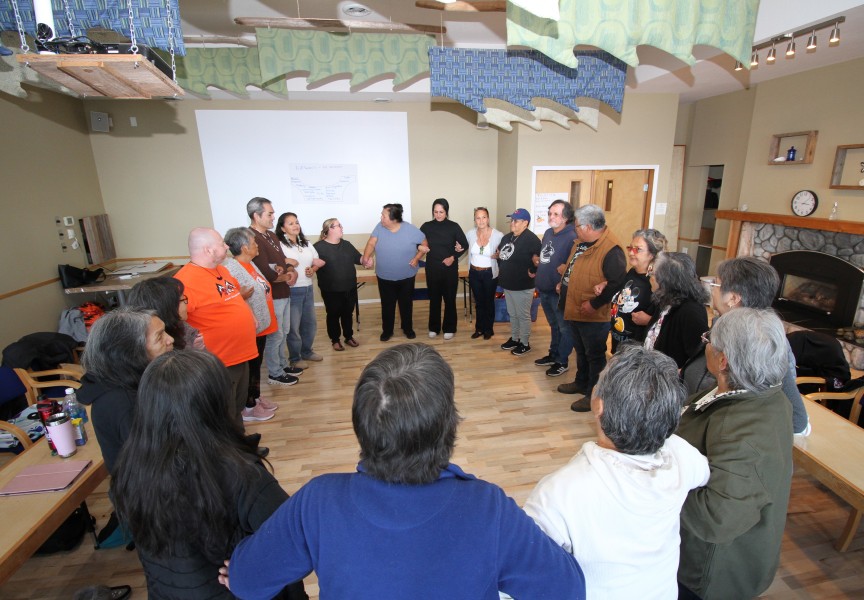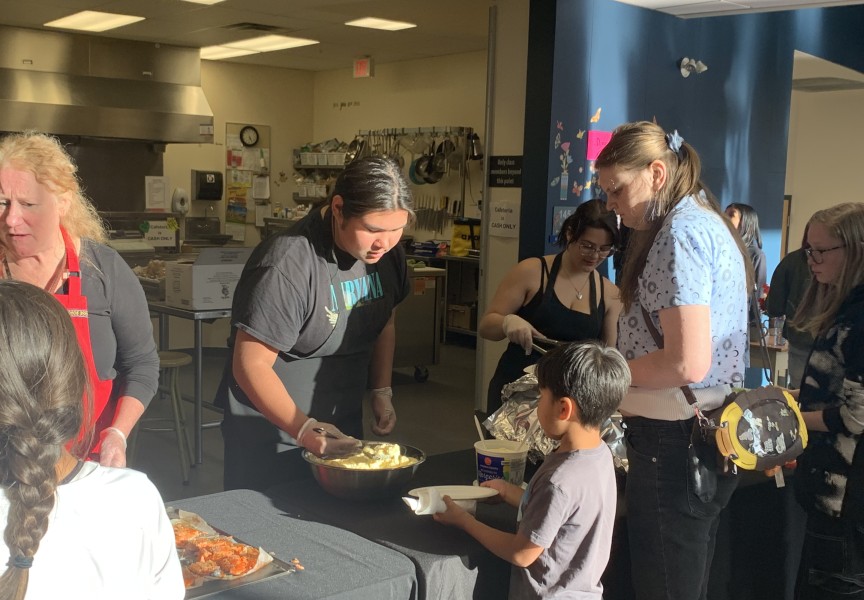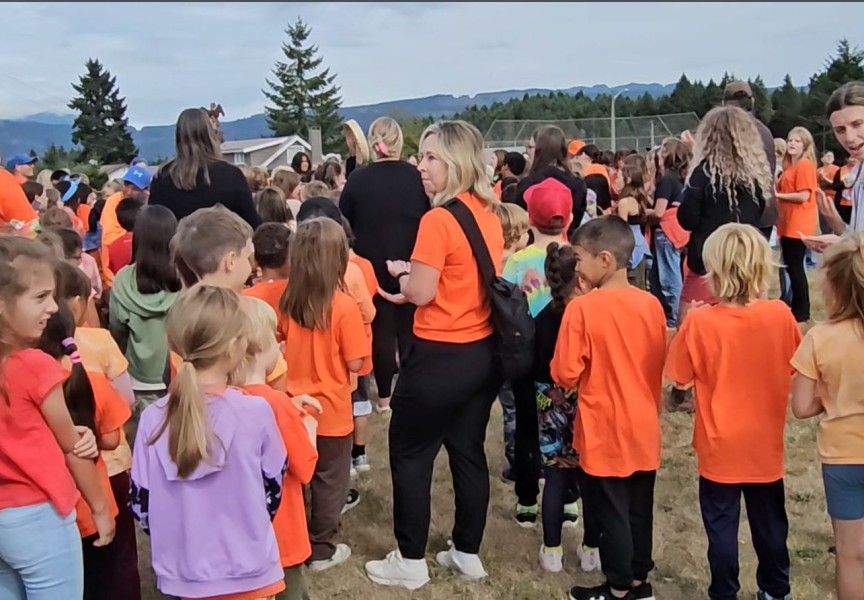Sheltered within a large tide pool along the Wild Pacific Trail in Ucluelet, Kenneth Lucas took a deep breath before diving five-metres to the ocean floor.
Armed with a weight belt and snorkel fins the length of his arms, the 15-year-old secured himself in place by clinging to a rock.
Behind him, Chris Adair pointed a flashlight into a dark hole under a boulder. A train of white tentacles came into view before Lucas kicked back to the surface for air.
Above water, Lucas held a wide smile before diving back down to get another look at the Pacific octopus tucked inside its den.
Lucas was participating in a three-day snorkel-harvester training course as part of the Tseshaht First Nation’s youth Warrior Program in late-August. Instructed by Adair, owner and operator of Bottom Dwellers Freediving, the goal was to expose the youth to underwater environments and aquatic species along the coast.
“That liquid curtain – that barrier of the surface keeps people at bay,” said Adair. “[This training] gives the youth another space to be excited about and feel connected to.”
The Tseshaht youth Warrior Program kicked off last September, following the success of similar programs held in Yuułuʔiłʔatḥ, Ahousaht, Tla-o-qui-aht, Ka:’yu:'k't'h'/Che:k:tles7et'h and Huu-ay-aht First Nations.
Designed to foster community and build leadership in First Nations youth through land-based learning, the program hosts weekly meetings and monthly camp-outs.
Lucas was encouraged to join by his sister a few months after the program was launched.
Feeling “bored” and without “anything to do,” Lucas said he didn’t need much convincing.
“I like coming out here,” he said, sitting on rocky ground next to the Pacific Ocean. “It gets me away from social media. I know social media is supposed to be fun, but it makes me more stressed.”
The interest in free-diving and harvesting developed in response to COVID-19 as concerns about food sovereignty and food security were amplified, said Nuu-chah-nulth Warrior Program coordinator Ricardo Manmohan.
“If the Delta variant locks us down again, [Nuu-chah-nulth] people can still go out and harvest t̓uc̓up,” he said.
Coastal Indigenous communities sustainably harvested seafood for generations before colonization, said Randi-Leigh MacNutt, the Tseshaht Warrior Program female youth coordinator.
By re-introducing these practices to the youth, she said they’re able to tap into those ancestral traditions.
“It’s a way of life,” said MacNutt. “It opens up the door to helping the youth learn about what they can eat from the ocean and [how] to move forward by teaching others.”
After securing funding through the First Nations Well Being Fund, Manmohan said the youth from each nation will receive the snorkel-harvester training, along with four sets of free-diving gear.
The training included a day of in-class academics in Hitacu, confined water training at Kennedy Lake, a species identification class at the Ucluelet Aquarium, and an open-water session in the ocean.
The gradual progression allows students to hone their skills and become comfortable with the gear before diving in a live-environment, said Adair.
“It’s a different planet down there,” he said. “I find that escaping into that liquid environment is very peaceful and helps me get away from the day-to-day.”
Tseshaht is the first nation to offer a women’s warrior group in tandem with a men’s group.
“Males and females will work together in the future so it’s important for them to work together now,” said MacNutt.
Jaidin Knighton and Lucas’ aunt, Brandi, also participated in the snorkel-harvester training.
While the unknown of what lurked beneath the ocean’s surface was “scary,” Brandi cast her fears aside and said, “it’s going to be worth it.”
Knighton joined because she was “genuinely curious” about what it was like to dive underneath the water while keeping warm.
Without advancements in wetsuit technology, free-diving and snorkelling were primarily warm-weather destination sports until more recently.
Adair said that no one was teaching free-diving on Vancouver Island up until five years ago when he launched Bottom Dwellers Freediving.
As accessibility to equipment and instruction has grown, the cold-water free-diving community has “exploded,” he said.
While the youth swam through kelp forests, Adair pointed out abalone and starfish along the way. Occasionally, the youth disappeared under the water and returned with a sea urchin in the palm of their hand for closer inspection.
“It’s not necessarily about getting deeper,” said Adair. “It’s about staying [down] longer to develop a connection to the in-water environment – [to] bring back harvest to the table to share with friends and family.”

